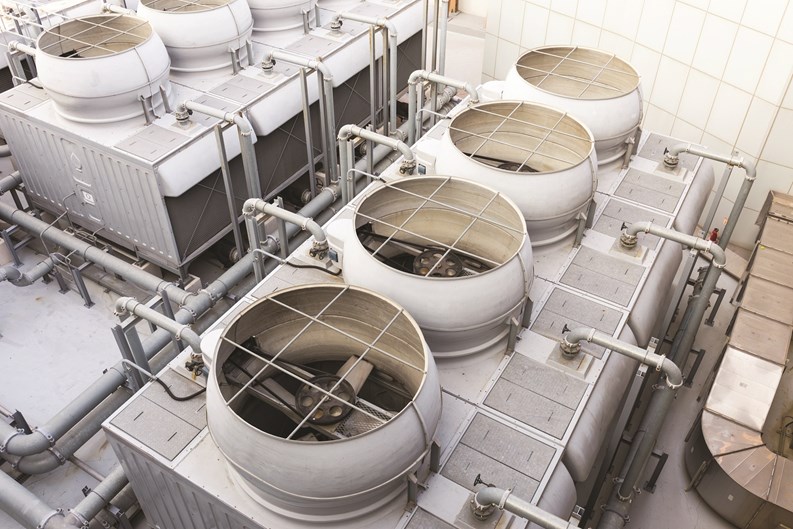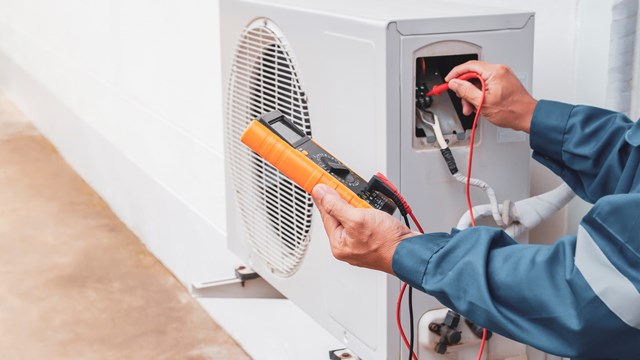In 1976, the American public became aware of a previously unrecognized disease, when 221 out of the more than 2,000 people who attended an American Legion convention in Philadelphia became sick with a form of atypical pneumonia that caused chills, fever, a cough and other flu-like symptoms.
Of the 221 people who caught the disease, 34 died. The disease was named Legionnaires’ disease, and the bacteria that causes it was named Legionella pneumophilia, popularly known as just Legionella.
Over the years, many people forgot about the disease, but it didn’t go away. In July and August of 2015, the disease affected at least 110 people in Lincoln Hospital, the Concourse Plaza shopping mall and several other buildings, all in the southern part of the Bronx.
A reported dozen people died, all of whom also had suffered from other medical conditions. The authorities traced the problem to the cooling towers of the affected buildings, and ordered that they be decontaminated within 14 days.
Legionnaire’s Outbreak
One of the five buildings, the Opera House Hotel, is a residential building (a boutique hotel in an old theater building where performers like the Marx Brothers once played). More relevant for readers of this publication, there was an earlier outbreak in January 2015 in Co-op City, the huge Mitchell-Lama co-op in the northeast Bronx, where eight people were affected. But this was a much less severe incident. In Co-op City, according to the city Health Department, preliminary tests also found that cooling towers were at risk.
Legionella thrives in standing water environments. In the “built environment,” it can be found in central air conditioning systems, whirlpools water-heating systems, humidifiers, showers, hot tubs—and cooling towers. In the Philadelphia epidemic, the Bronx outbreak, and the most serious outbreak to date, in Murcia, Spain, in 2001, which infected 449 people, cooling towers were all found to be the cause.
While Legionella bacteria commonly occurs in cooling towers, just as it does in lakes, streams and many of the other above-named sources, it’s usually in such low levels that “it’s not enough to hurt anyone,” says Robert I. Leighton, technical director for Leighton Associates in Brooklyn and a certified industrial hygienist.
It’s only when the water isn’t treated according to proper procedures and is allowed to heat up that the bacteria begin to multiply, reaching high levels, he says. Legionnaire’s disease cannot be “given” from one person to another—it can only be gotten through exposure to a contaminated source.
Leighton, incidentally, was in Philadelphia during the initial Legionnaires’ outbreak. He had just gotten a master’s in environmental health and was working for Gulf Oil, monitoring workers’ exposure to hazardous materials. He followed the outbreak with interest, since it was basically in the same field for which he had been trained.
Some people confuse cooling towers with rooftop water tanks, probably because both are commonly found on the roof. According to Michael P. Patton of the American Society of Heating, Refrigerating and Air Conditioning Engineers (ASHRAE), “A rooftop water tank stores domestic (or potable) water for use by building occupants, including that water used for hot potable water heating.” In brief, it creates water pressure so that water can be provided to tall buildings.
On the other hand, cooling towers, says Leighton, chill non-potable water that has chemicals added to it. Patton explains that cooling towers are part of a “chilled water loop” that is part of the building’s air conditioning system—they take water coming from a chiller, cool it down by removing excess heat, and then return it to the chiller. The heat comes from the energy needed to operate the chiller’s compressor. The water is needed for fan coils, air handling units and other air deliver devices in the building’s HVAC system.
“In this warm, relatively dirty water,” says Patton, “Legionalla species of bacteria can thrive in the mud, deposits and biofilm often found in these systems.” They can then spread into the general building environment in the form of water vapor.
Regulations Take Shape
Although of course Legionella had been reported in New York City before (such as in the Co-op City case), the South Bronx Legionnaires’ outbreak put the city in general on notice. As John Banks, president of the Real Estate Board of New York (REBNY), said in a statement provided to The Cooperator:
“Cooling towers are complicated systems which require regular maintenance, and testing is part of an ongoing protocol. Legionnaires’ disease is a serious issue, and building owners we’ve spoken to are responding appropriately. REBNY supports an effective and efficient system of registering, inspecting and, when necessary, treating cooling towers.”
Trade organizations like ASHRAE had always published standards for Legionella. In fact, ASHRAE published its Standard 188-2015 just this past June. However, as Patton points out, such standards are voluntary, unless and until they are adopted by state or local authorities. And by August 2015, the city was making moves to tighten its cooling-tower inspection and Legionella prevention procedures.
Mayor Bill de Blasio issued an executive order, through the health commissioner, stating that all building owners needed to clean and disinfect their cooling towers within 14 days. The order read that disinfection requires the use of biocides, and mandated building owners to hire environmental consultants who have experience working with industry protocols, such as the aforementioned ASHRAE Standard 188-2015. The executive order also provided a list of approved contractors.
A week later, the City Council passed Local Law 77 of 2015, which was crafted as a collaboration between the city and the state, that mandated that all existing cooling towers, fluid coolers and evaporative condensers be registered with the Buildings Department within 30 days of the law’s taking effect, and that new towers and other such equipment need to be registered before they go online.
In addition, the law specifies that from now on, the “owner or operator of a cooling tower” needs to file a certification every year stating that the tower has been inspected, tested, cleaned and disinfected, as well as to develop a maintenance program and plan. Concurrently, the state issued its own regulation, which is very similar and has the same elements.
Inspections and Treatment
What do cooling tower inspections entail? Patton says that inspection of cooling tower equipment, including any water treatment equipment, is usually completed monthly. “Cleaning the cooling tower basin by removing sludge, mud, debris, accumulated deposits is usually done quarterly to annually, depending on the surrounding environment, water quality and water treatment program. A professional engineer, environmental consultant, or water treatment specialist like an industrial hygienist, not on-site building staff, usually perform the inspections.
“Cleaning, in the context of bacteria and Legionella, usually means a more thorough cleaning using a chemical mixture to kill microbes and adding dispersants (detergents) to lift hidden biofilms from inaccessible surfaces. It may also include scrubbing or power-washing of exposed surfaces in a cooling tower,” he says.
Leighton adds that there is a difference between working with an open cooling system, where water visibly cascades down into a trough, and a closed system, where everything is encased. “If you have an open system, look for sediment, residue, dirty-looking water. You don’t want biofilms to build up—this is what bacteria can feed on.”
In a closed system, although the aim is the same, you can’t conduct a visual analysis, but in both cases you send a sample of the water to the lab. If there is a problem, the system must be drained of the water that is already there, he says. Testing, he says, can range for $200 or $300 on the low end to $800 to $1,000 on the high end.
Penalties
What if a building owner, manager or board doesn’t comply with the new city regulations? The local law itself spells out the penalties: “Any owner of a building who violates any provision of this section or any of the rules promulgated thereunder shall be liable or a civil penalty of not more than $2,000 for a first violation, and not more than $5,000 for a second or subsequent violation.
In addition to civil penalties, one section of the local law, known as subdivision “g,” details a procedure in which the city orders a building owner who doesn’t clean and disinfect a cooling tower within the required timeframe, to comply by a specified deadline. If, after all that, the owner still doesn’t comply, it will be considered a misdemeanor punishable by a fine up to $25,000, imprisonment for up to a year, or both.
If workers in the building are exposed to Legionella, the federal government’s Occupational Safety and Health Administration, or OSHA, could get involved. Ted Fitzgerald, spokesperson for OSHA Region 2, which includes New York, says that “OSHA uses a variety of means to obtain the information needed for it to determine whether or not the employer is in compliance with applicable standards, including but not limited to onsite inspection,” and that if the employer (in this case, the building owner or manager) is not in compliance, OSHA can also issue citations and impose fines.
On its website, OSHA has an “e-tool” to help industrial hygienists identify and deal with an outbreak of Legionella. However, said Fitzgerald, in this South Bronx Legionnaire’s case, OSHA did not conduct an inspection.
In general, several online resources exists for building owners, managers and board members who are concerned about Legionnaire’s disease. ASHRAE is preparing a new policy statement on the subject. The Centers for Disease Control and Prevention’s website contains useful information about the disease. Other resources, says Patton, include the American Water Works Association and the Association of Water Technologists.
Many of the companies that perform cooling-tower cleaning and testing services have excellent summaries on their websites. The relevant city and state regulations can also be found online at www.nyc.gov/html/dob/downloads/pdf/ll77of2015.pdf. Above all, be sure to hire an approved, experienced contractor.
Raanan Geberer is a freelance writer and a frequent contributor to The Cooperator.










Comments
Leave a Comment